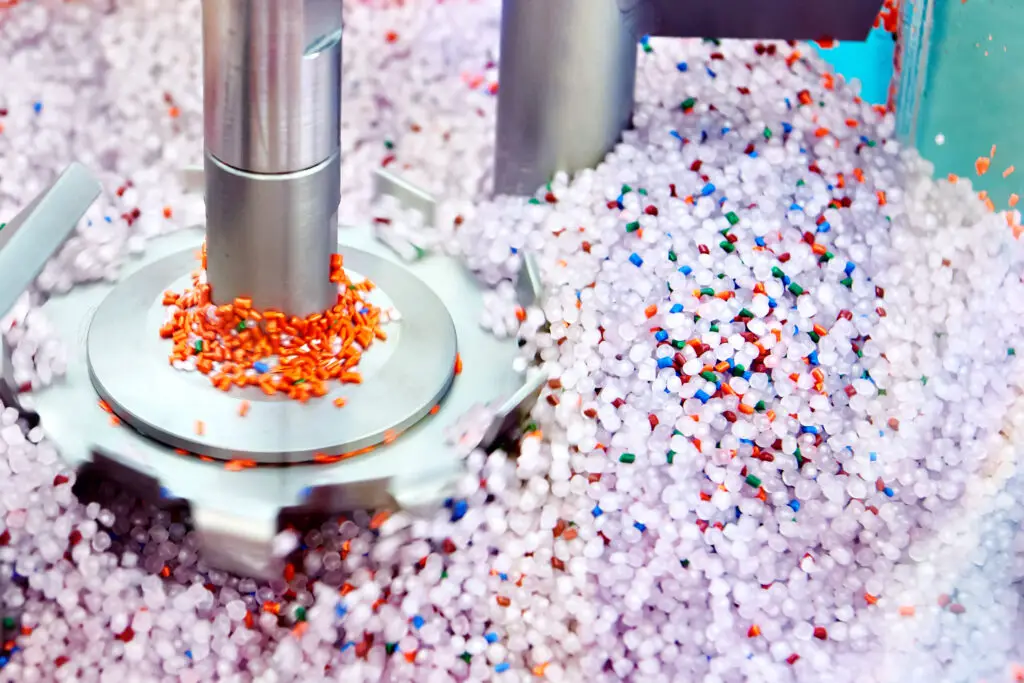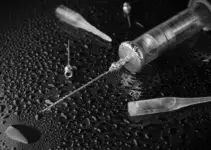The plastics manufacturing industry is a high-volume, fast-paced world. In this competitive environment, plastics manufacturers and processors are constantly striving to optimize their production processes for maximum efficiency.
But how do you squeeze every ounce of value out of your plastic manufacturing processes, while also minimizing waste and environmental impact? This post has got you covered. Follow these ten steps and watch your operational efficiency soar:

1. Deep Dive into Your Current Plastic Manufacturing Processes
Before leveling up, you’ve got to know exactly where you stand. Map out your whole plastic processing adventure from start to finish—raw materials coming in the door to completed plastic goodies heading out.
Where are things getting jammed up? Which spots are plastic waste black holes? Any extra fluff in the process slowing your roll? Pinpoint those trouble zones.
Then, put some numbers to those headaches. How much are they really hitting your wallet and eating up precious time?
2. Stop Problems Before They Start
You know what they say—an ounce of prevention beats a pound of fixes! Set up a killer maintenance routine for all your plastic-making machines. Schedule those checkups and cleaning sessions for your injection molders, 3D printers, the whole nine yards.
Being proactive like this can save you serious cash by preventing big breakdowns and production snags. Plus, it keeps your product quality on point from start to finish.
Make sure your team knows how to spot potential hiccups early too. Train them to speak up ASAP if something seems off. Nip those issues in the bud!
3. Embrace Automation to Boost Efficiency
The plastics manufacturing world thrives on efficiency. That’s where automation comes in, your trusty sidekick in the race against time. Consider automating repetitive tasks wherever possible to streamline your operation.
Imagine robotic arms swiftly and tirelessly handle material handling, ensuring a steady flow of pellets to your plastic injection molding machine. No more manual loading, freeing up your workforce for more complex tasks. This not only boosts production speed but also minimizes the risk of human error.
And it doesn’t stop there. Automated quality control systems can meticulously inspect every plastic part coming off the injection molding machine. These digital sentinels ensure consistent quality, catching any defects before they reach your customers.
4. Optimize Machine Settings for Flawless Plastic Parts
Are you getting the most out of your injection molding machines and other equipment? Regularly review and optimize your machine settings for each product you produce.
This might involve adjusting injection molding parameters, or tweaking die cutting pressures during plastic processing. A minor tweak can lead to significant improvements in cycle times and raw material usage.
5. Standardize Workflows for Seamless Production
Consistency is key to efficiency in plastics manufacturing. Develop and implement standardized workflows for every step of your production process. This ensures everyone is on the same page and eliminates confusion on the shop floor. Standardized workflows also make training new employees easier and faster, streamlining your entire operation.
6. Implement Inventory Management Systems to Avoid Delays
Ever had a production line grind to a halt because a key component was missing? Inventory management systems are your knight in shining armor, preventing these frustrating delays.
These system track your raw materials, from resin pellets to dyes. They tell you exactly how much you have on hand, how much you’re using, and when you need to reorder. No more scrambling to find that last bag of plastic pellets–the system sends you automatic alerts when supplies are running low.
But it’s not just about keeping things stocked. Inventory management systems also help you avoid overstocking. Too much inventory ties up cash and valuable warehouse space. The system helps you find the balance, ensuring you have what you need without unnecessary clutter.
7. Empower Your Workforce
Your employees are your greatest asset in the plastics manufacturing industry. Invest in their training and development. Provide ongoing education on efficient production techniques, best practices for plastic processing, and lean manufacturing principles.
Empower them to make suggestions for improvement and involve them in the problem-solving process. A happy, engaged workforce is a productive workforce, leading to higher quality plastic parts and overall operational efficiency.
8. Embrace Continuous Improvement for Long-Term Success
Efficiency is an ongoing journey, not a destination. Develop a culture of continuous improvement within your company. Regularly review your plastic manufacturing processes, identify areas for further optimization, and implement changes. Encourage your employees to suggest new ideas and be receptive to feedback.
9. Track and Measure Your Progress for Data-Driven Decisions
Data is your best friend. Identify key performance indicators (KPIs) that reflect your production efficiency. This could include cycle times, scrap rates, energy consumption, or machine uptime. Track these KPIs regularly and analyze the data. This allows you to measure the effectiveness of your improvements and identify areas that need further attention for optimal plastic processing.
10. Embrace Sustainable Practices for a Greener Future
Efficiency isn’t just about production speed in the plastics industry. Look for ways to reduce plastic waste and minimize your environmental impact. Explore the use of recycled plastics, optimize your cooling systems to reduce energy consumption during plastic injection molding, and implement proper waste disposal procedures.
Being sustainable can not only benefit the environment but also lead to cost savings in the long run, reducing your overall environmental impact throughout the plastic products’ life cycle.
Final Thoughts
Don’t let inefficiencies slow you down. Implement these steps and watch your plastics manufacturing soar. Remember, efficiency is a marathon, not a sprint. Embrace continuous improvement, and become the leader of the pack.
